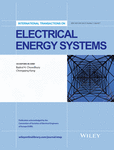Modeling and impacts analysis of energization transient of EHV/UHV magnetically controlled shunt reactor
Summary
To address the problems of overvoltage, harmonic distortion, and mal-operation that can occur in protection systems as a result of direct energization in magnetically controlled shunt reactors (MCSRs), this paper proposes a novel approach for MCSR energization—namely, pre-excited energization. Using the structure and operating principles of an MCSR, a detailed derivation of energization transient mathematical model for both direct and pre-excited energization are presented and the model-specific impacts of the 2 different energization modes are investigated. To validate the theoretical analysis, we performed physical model tests and simulations of different energization modes. The results indicate that pre-excited energization is capable of suppressing overvoltage on the DC link bus and alleviating harmonics caused by direct energization.




